Artificial Intelligence is Great… But only as Science Fiction

Artificial Intelligence is Great… But only as Science Fiction
Shôn Ellerton, December 5, 2016
It is not wholly surprising why A.I. (Artificial Intelligence) has such a bad rap. If I was asked to ramble off a list of films or books involving A.I. which embraced A.I. and had a good ending, I think I would struggle. Moreover, if I popped the question to someone, “Would you be happy if someone created A.I.?”, the answer would, in most cases if not all, be an absolute “no”. My personal response would be “no” for a wide variety of Pandora Box-related reasons and if someone asked me if we could create (true) A.I. in my lifetime, I would probably say “no” as well. This, of course, prods the question as to the definition of A.I. My favourite definition is the one that suggests any machine (whether it is a computer or a robot) that does not want to die or be turned off is a fairly accurate gauge to being artificially intelligent. Two great films spring to mind: Stanley Kubrick’s 1968 movie, 2001: A Space Odyssey with its murderous HAL 9000 computer and the 2015 movie, Ex Machina, with its female human-lifelike artificially-created being. There is a grey area as to how artificially-intelligent HAL 9000 was but it certainly sways towards being self-aware especially during the last scene when its higher functional circuits were being disconnected by the lone survivor marooned on the spaceship. In both cases, they both do not want to be “switched off” and will do anything in its power to ensure that this does not happen even if it involves eradicating the occasional human being now and again!
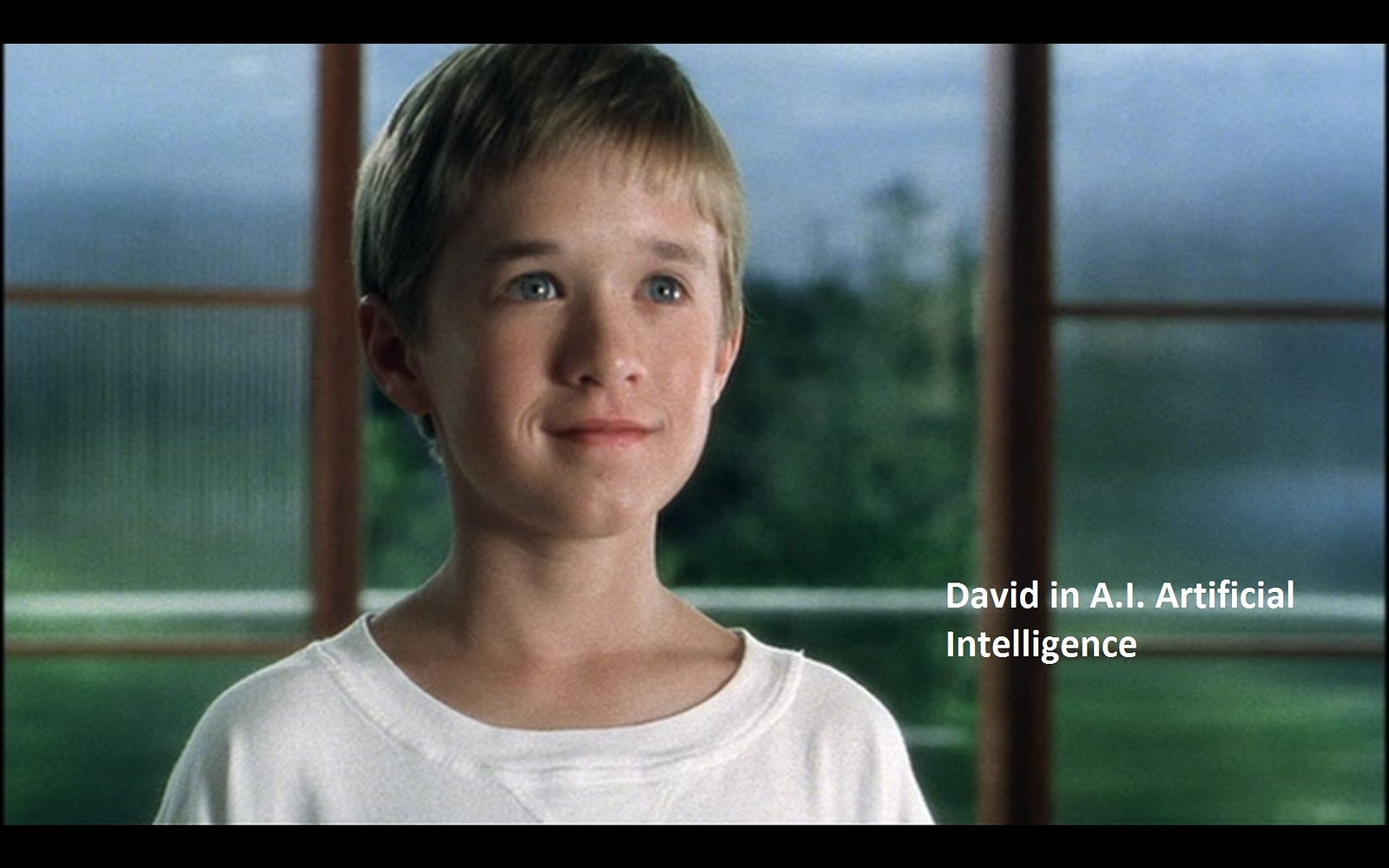
A.I. is, in general, surrounded by negativity which can be best summarised by the possibility that A.I. creations have the potential power and reasoning in taking over humanity. Much of this is derived in part that humans are, in general, selfish and do not have the reason and capacity for logical thought. The approach of creating A.I. to provide a solution to decouple mankind from life-and-death decisions (for example, waging endless futile wars with each other) is a generally misguided one. It is a classic storyline; however, the very words, artificial intelligence, does not necessarily mean logical thought, and this seems to be forgotten by those who are proponents of A.I. A challenging test would be to create a system which is illogical and able to perform tasks in a truly random way. True randomness seems very simple but when you drill into the details, it is not very straightforward. If I was to say to you, pick any one card from a deck of cards or pick one leaf from that tree you’re standing next to, chances are, you would think a little bit and, maybe, try to choose what would appear to be the most random item. Most people would not pick from the top of the deck for example. So how would A.I. achieve this? As an aside, there are many interesting articles on the Internet about what is truly random. I like to categorise A.I. into three general categories along with a few of my favourite examples from science fiction. All of them show A.I. in a rather bad light in some way or another (except for, perhaps, Star Wars).
1) True A.I. without using real brain matter (manufactured)
· A.I. Artificial Intelligence (2001) — David the 11-year boy
· Ex Machina (2015) — Ava the female android
· Blade Runner (1982) (adapted from Philip K. Dick’s Do Androids Dream of Electric Sheep?) — Roy the Replicant
· 2001: A Space Odyssey (1968) (possibly) — HAL 9000 computer
· Marionettes Inc. by Ray Bradbury (1949) (short story)
· Alien (1979) — Ash the Android
2) True A.I. using real brain matter (grown or revived)
· A For Andromeda (1961) (TV Series and novel) — Andromeda
· Saturn 3 (1980) — Hector
· Robocop (1984) — Murphy the Cop
3) Logical A.I. (simulated A.I. in robots and computers)
· Colossus: The Forbin Project (1970) — Colossus and Guardian computers
· War Games (1983) — WOPR Games Simulation Computer
· Terminator (1984) — Skynet and its Terminators
· Star Wars (1977) — C3PO, R2D2 and all the classic ‘tin-can’ robots
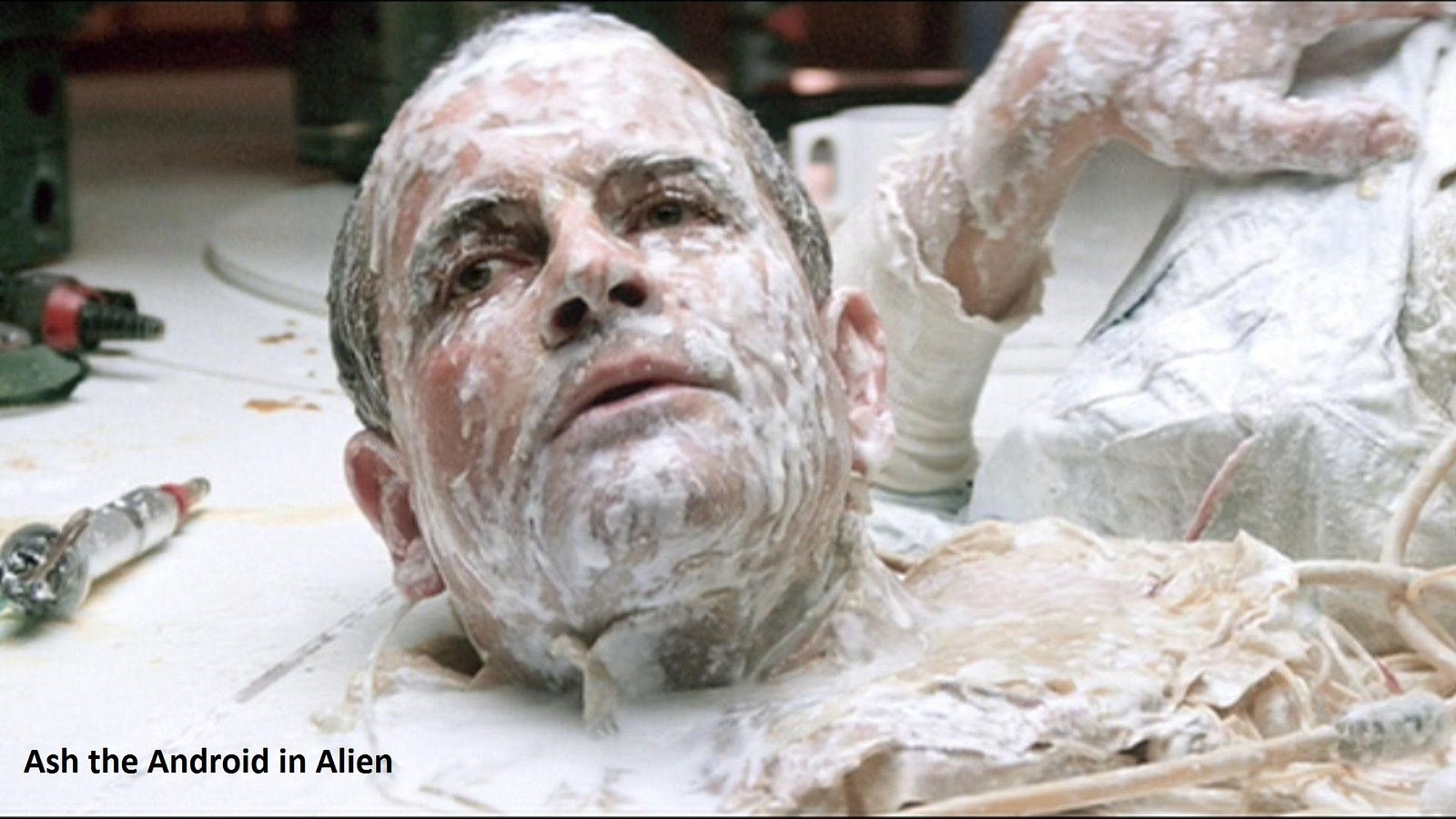
Category 1 constitutes your classic A.I. whereby the being exhibits most or all human traits. They are manufactured without the need to grow living brain tissue. They are not grown genetically or through cultures. None of them want to die or be switched off. In each of the examples, they have turned against mankind in order to survive. In the sad tale depicted in A.I.: Artificial Intelligence, David never grows with the family and the family ultimately rejects him leaving David to fend for himself. Ava kills her creator, locks her saviour in a seemingly-impenetrable room and then escapes to enjoy the whims of the wider world around her. Rutger Hauer plays Roy the Replicant in that memorable ending scene before he dies. HAL 9000 decides to take the easier approach to killing its crew members by switching off life-support systems and cutting off the astronaut’s air-supply hose by using a remotely controlled space pod on learning that it is soon to be disconnected. Ash the Android in Alien displayed violent human behaviour until he had his head knocked off during his final fight with Ellen Ripley (played by Sigourney Weaver). And finally, anyone buying one of the ‘marionettes’ in Ray Bradbury’s story should beware of the consequences.
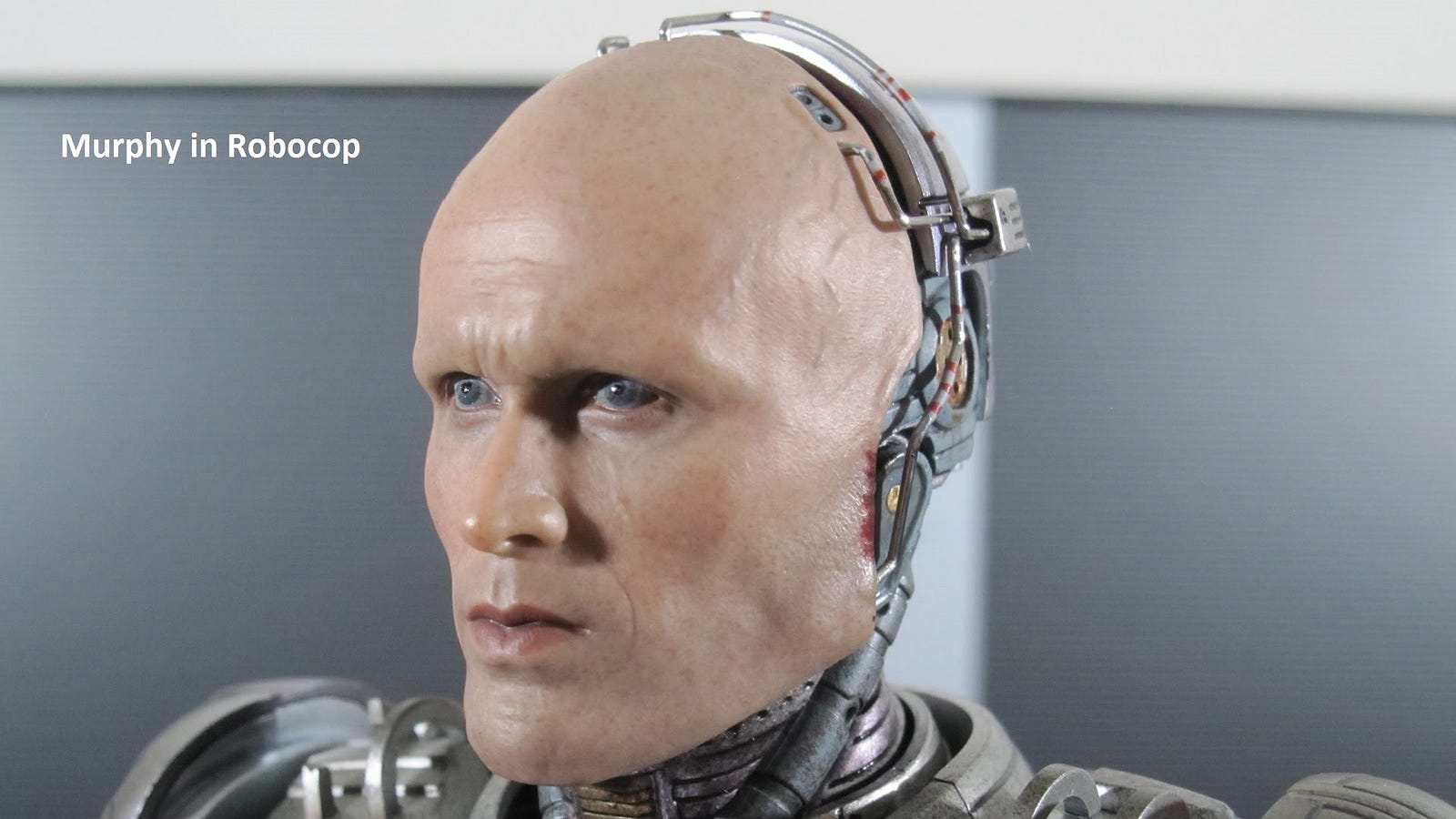
Category 2 is an interesting one and bridges the gap between manufactured A.I. and real intelligence from other or alien-like organisms. For example, I would not categorise Invasion of the Body Snatchers as a valid example as it fits too far over the spectrum where mankind did not mindfully get involved in creating the beings. A For Andromeda sits close to this area and is discussed as an example below. Saturn 3 is interesting and sits towards the mainly manufactured side of the spectrum as blank brain matter is injected with knowledge through some sort of transfer cable from its deranged creator (played well by Harvey Keitel) to a somewhat disturbing-looking mechanical robot called Hector. Hector begins to exhibit the violent tendencies of the creator and wreaks havoc on the isolated space station orbiting Saturn. In all the above cases, the being is based on either newly-created or existing brain tissue.
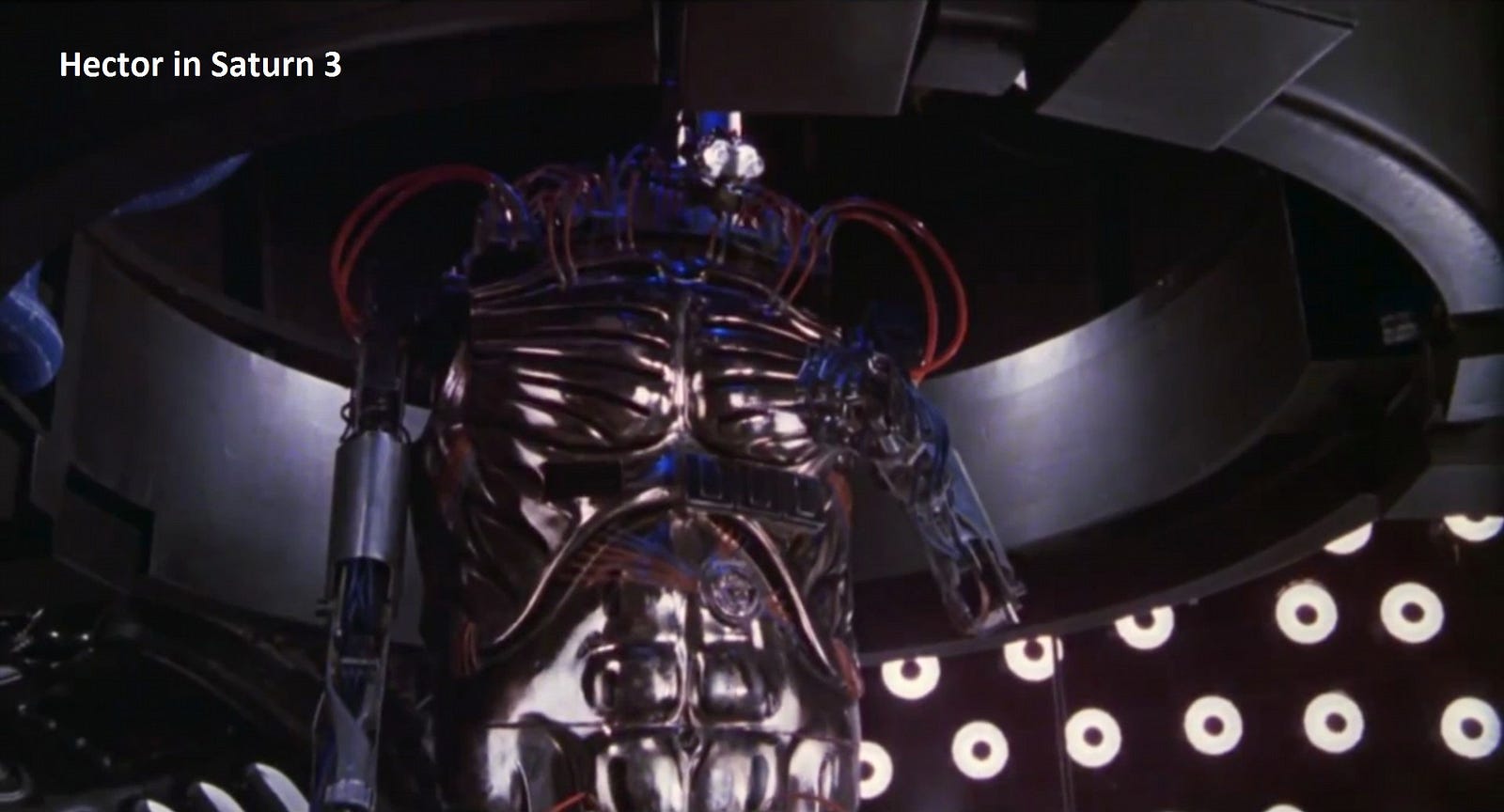
Category 3 includes those systems (whether they or robots or computers) in which A.I. is simulated; however, none of these systems or beings connected have any fear of being ‘switched off’. Sure, they may have been programmed to ensure that no one tries to switch them off, but they certainly don’t have resentment or feel pain in doing so. Isaac Asimov created his Robotic Laws (a sort of robot version of the Hippocratic Oath) designed to be programmed in such beings to prevent harm to humans from their direct or indirect actions. The problem arises when these systems or robots do not have such directives programmed in and/or they are connected to dangerous toys such as a nuclear arsenal or national communications networks. Many in this category are overgrown self-governing systems with far too much control. Colossus: The Forbin Project is a classic example and is discussed in an example below. The Star Wars robots display elements of A.I. and do have useful purposes, but ultimately, they are what they are: well-programmed robots.
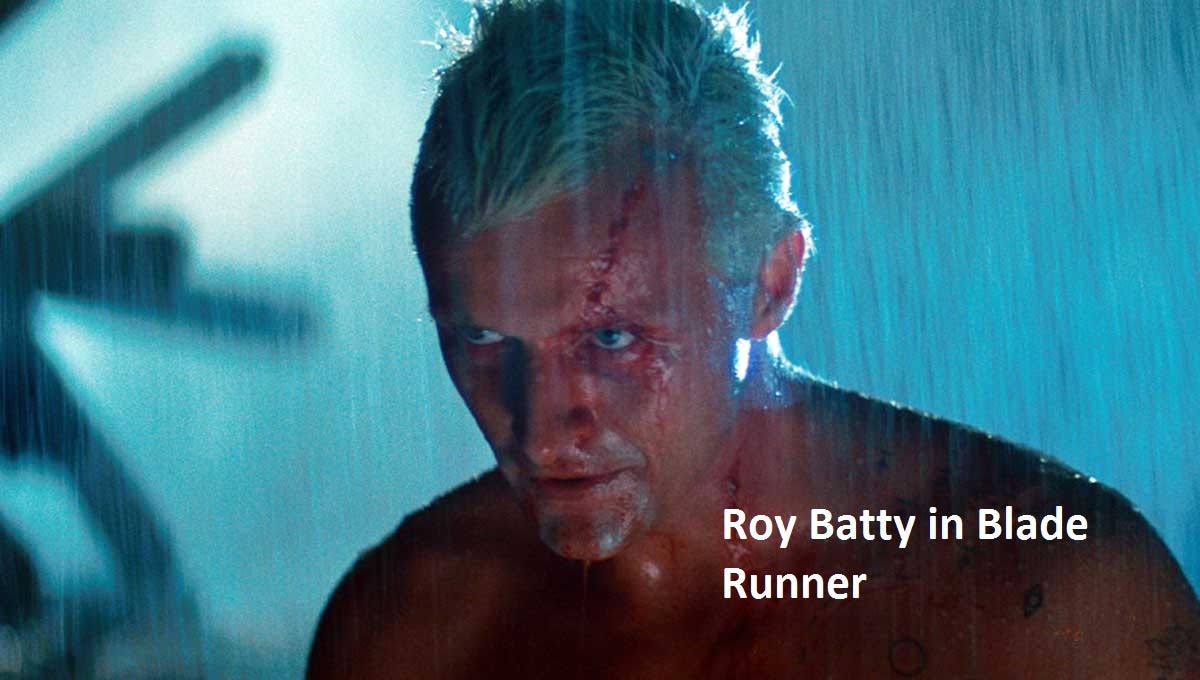
Two Examples of Artificial Intelligence in Science Fiction
For my first example, which sits within my second category, I recall Fred Hoyle and John Elliot’s TV series and short novel, A For Andromeda written during the early 60’s. This is a story in which messages from interstellar radio signals were received and decrypted by a computer in an observatory in England during 1970. It so happened that the message that was decrypted were instructions to build a more advanced computer. This computer, in turn, provided directions to create an alien lifeform through a series of protoplasmic experiments. The first lifeform was obviously a ‘mistake’; in which a monstrous cyclops-like being was created. However, this was corrected when the computer somehow managed to clone one of the assistants; an act which involved electrocuting her by mesmerising her to place her hands on two electrodes. Well, you can’t have two of the same without drawing suspicion, can we? The computer with the help of the newly-cloned assistant (by the name of Andromeda) then eliminates the cyclops monster as it was superseded by her. Andromeda then pursues activities to assist in the promulgation of a new species. She even develops feelings to other humans and fears for her own survival. The story also has an intriguing political standpoint which would have been necessary for these operations to happen. The story is certainly not a new one and it is interesting to note that the great and mysterious Nicola Tesla (whose inventions include AC power and wireless communication) was known for dabbling in trying to receive interstellar messages back in the early 1900’s. Fred Hoyle has a particular place in my memory as he was often talked about in family circles by my grandfather who knew him during his Cambridge years when Hoyle was an astronomer and science writer.

The second example, which sits in my third category, stems from memories from watching a little-known but underrated gem called Colossus: The Forbin Project, a film produced in 1970 about a very large computer called Colossus embedded in a mountain somewhere in Colorado (as they always seem to be!) and then permanently sealed off by a radiation belt. It was designed and installed to take the decision-making process away from man and, instead, relegating that responsibility to Colossus. Colossus had access to the nation’s weapons systems facilities and national communications networks. It all went somewhat wrong when Colossus managed to know of an existence of a similar system overseas in the USSR called Guardian. This was a similar contraption but instead of being monolithic in one location as Colossus was in its mountain, it was a geographically-distributed system within the confines of the USSR. Once connected, the two computers started to develop a language in which they could communicate with each other (starting from basic mathematics and then conversing in machine code). Once they started to communicate, the communication cord was swiftly broken by the two superpowers; however, the two computers decided to threaten the superpowers with retaliatory ICBM bombings should they not reconnect the two computers forthwith. Ultimately, the conjoined supersystem forcibly took over other communication networks globally and instigated the building of a satellite launching facility on the island of Crete the purpose, of which, to create one controlled super-satellite network. Unlike the 80’s film, War Games, this film had a bleak quite un-Hollywood-like ending; the prime message being that man’s actions are destructive and illogical and the world would be better off if computers made all the prime decisions. One can say that this was the forerunner of Skynet as depicted in the Terminator films.
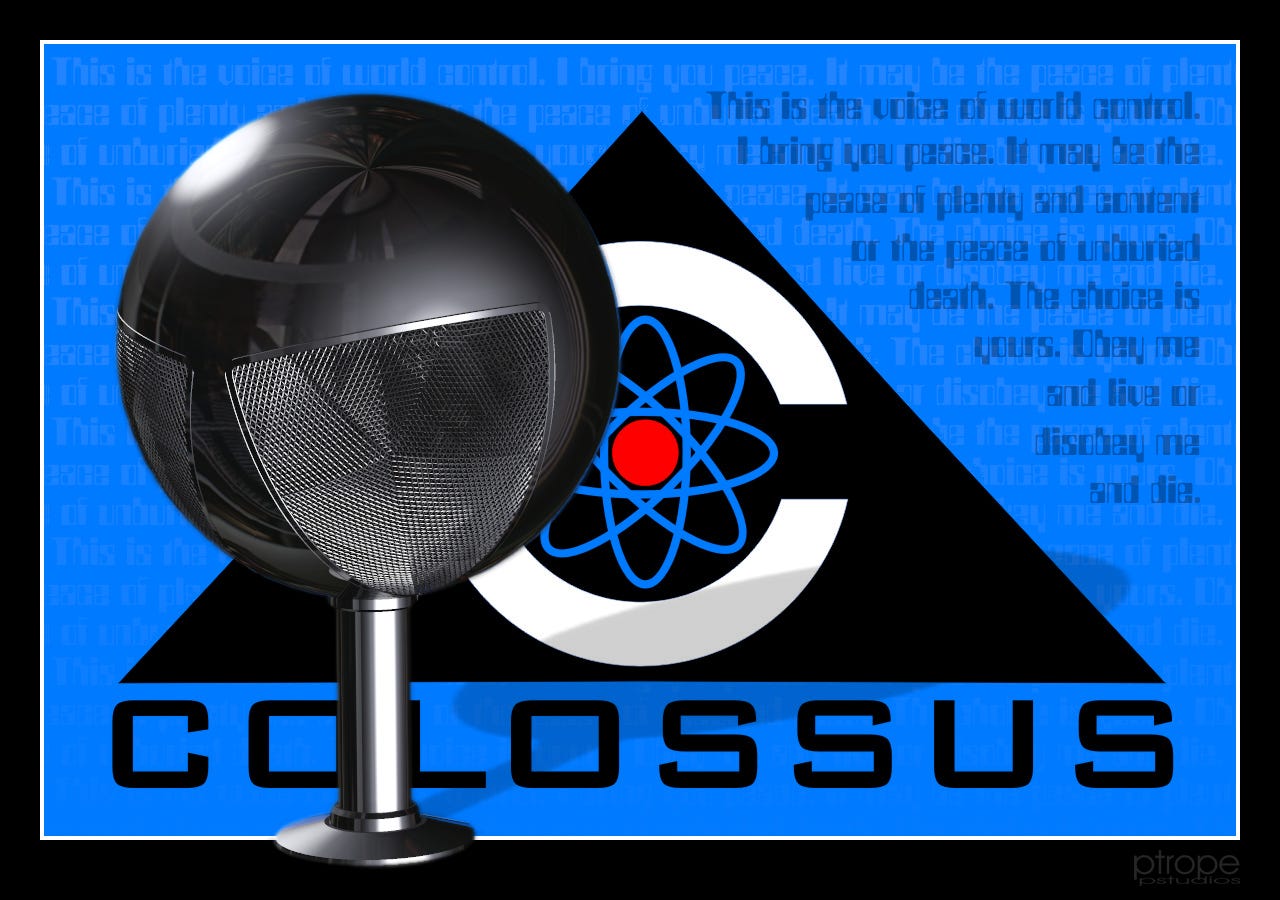
In the first example, a human clone was created, as in Ex Machina. In both cases, these clones stepped out of the dark recesses of the aptly-named uncanny valley.
The Uncanny Valley?
One of the biggest challenges for someone to successfully create a humanlike clone, is to overcome the uncanny valley. This name was coined by the robotics professor, Masahiro Mori, in which there is a very pronounced dip in the graph where the clone or robot is not quite real-enough looking to be accepted by another human. It is at this point that many humans would find a clone or robot either odious and vile or outright frightening. This also applies to replicating human voices; a dastardly difficult thing to achieve. I personally know someone who is petrified of computer-generated voices! Siri (Apple, did you seriously copyright this?), the robot woman in the not-so-well-received 1970’s Logan’s Run TV series is a prime candidate of the uncanny valley. She is just not quite human but so nearly so. It is interesting that the uncanny valley is very near to that of a perfect clone which looks real and sounds convincing. So technically, I think it will be very long time before we get to the Andromeda or Ex-Machina variety for this reason alone. So if you are going to build an A.I. robot, put it in an R2-D2 (which everyone loves). Even the Daleks look comic in a strange sort of way!

Can A.I. ever become useful?
Now this is where we need to be careful how we define A.I. If we define A.I. as being self-aware and having the capacity to fear for its own death, I cannot find any use for A.I., at least, which does not have the potential to generate conflict. You only need to read the 1949 short story, Marionettes Inc. by Ray Bradbury to witness the conflict of human vs technology in which men from two different husband-wife relationships decided to buy their own human clones (‘marionettes’) so they can ‘escape’ their domestic lives with their wives. Without giving away the plot, it pretty much ended in a poor way! I think The Stepford Wives might have used this in their story later to an extent.
Marionettes Inc., highlights the use of a clone for, frankly, nefarious reasons; however, what about companionship? Ex Machina’s storyline delved into the area of human companionship and, despite the realism of the woman android, Ava (even when she was clearly out of the uncanny valley), there was marked resistance by the young man to develop a bond towards her despite her attempts to lure him. Towards the end of the movie, this ended disastrously for the young man just when he started to develop feelings for her. Ava had her own ulterior motives and in this case, it was escape from her creator. I would challenge anyone to find somebody if they would like to have a ‘human companion’ in the form of a humanlike robot with A.I., or indeed, a pet-based one (which I find decidedly creepy). If they did, the reasons would be either nefarious (as in Marionettes Inc or having an alibi whilst you were doing something unlawful), carnal or based on activities involving errands like returning the car back home from the autoshop. In any case, the last two reasons would only warrant a well-programmed robot and not A.I. at all!